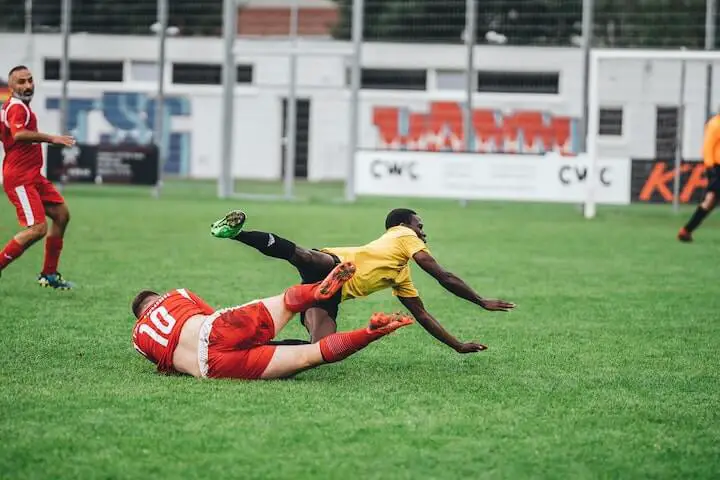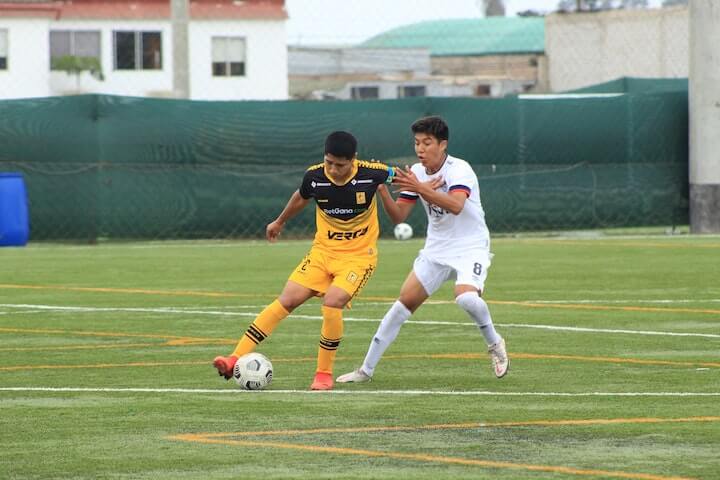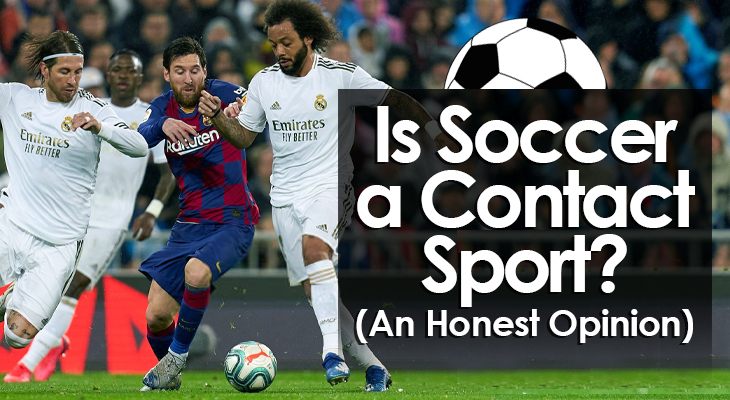Is Soccer a Contact Sport? (An Honest Opinion)
Soccer is known around the world as “the beautiful game.”
As fans, we love nothing more than celebrating a great goal, an amazing first touch, or a mind-boggling piece of skill.
However, as the saying goes, “beauty is in the eye of the beholder”.
Some fans embrace the grittier aspects of the sport and get their kicks from last-ditch tackles and 50/50 challenges.
While the physicality of the game has become diluted over the years, there is still a place for industrious and defense-first players.
Unfortunately, diving (flopping) and simulation have become rampant at virtually all levels, causing people to doubt whether physicality is still part of the game.
This begs the question — Is soccer a contact sport?
Is Soccer a Contact Sport?
Since its inception, soccer has always been a contact sport.
Although much of the contact is light, players are continually competing for the ball, tussling with opponents, and battling to win aerial contests.
Compared to high-contact sports like American Football, Australian Rules Football, or rugby, the contact in soccer is mild.
However, this doesn’t mean we don’t see the occasional heavy collision on the field.
Just take a look at this compilation of brutal tackles if you need further clarification!
One of the main differences between contact in soccer and other sports is its necessity.
In the NFL, every snap triggers a series of heavy collisions between 300-pound linemen and more often than not, a tackle on the running back or receiver.
In stark contrast, a soccer game can go for several minutes without any meaningful contact.
Despite its free-flowing nature, soccer is highly regulated.
The use of excessive force and illegal tackles are punishable by freekicks, penalties, as well as yellow and red cards.

What Is a Contact Sport?
Debates as to whether or not soccer is a contact sport generally come down to people’s perception of what a contact sport is.
However, such debates can be quickly settled with a simple definition:
A contact sport is one that involves physical contact between competitors.
It’s really that simple.
In sports like basketball, most significant contacts between players result in a foul.
However, some level of contact is inevitable, so you could consider it a semi or minimal-contact sport.
Soccer, on the other hand, is a full-contact sport.
Physical contact is allowed, as long as it isn’t excessive.
Types of Contact in Soccer
There are several types of legal contact in soccer.
Some of the most common ways to impose physicality in a game include:
#1 - Standing Tackles
Standing tackles involve dispossessing an opponent without going to the ground.
This technique typically involves timing the player’s dribble and using the feet to take the ball away from them cleanly.
Alternatively, the defender can use their body weight to nudge their opponent off the ball.
This is a trickier technique since the defender must ensure they are shoulder to shoulder with their opponent.
If the defender shows little to no attempt to play the ball or they block their opponent’s path without contacting the ball, a foul is likely to be called.
#2 - Sliding Tackles
A slide tackle is where the defender goes to ground and extends their leg to knock the ball away from their opponent.
Since slide tackles require momentum, they can be difficult to control.
They are typically less successful than standing tackles but are often necessary when attackers are in dangerous positions.
#3 - 50/50 Challenges
A 50/50 challenge is a foolproof way to fire up a stadium crowd.
When both players have the same opportunity to win possession, the duel often comes down to who wants it more.
This demonstrates effort and a will to win, which every fan can appreciate.
As long as both players compete fairly and get a touch on the ball, hard 50/50s are generally permitted.
They are typically the heaviest legal contact allowed on a soccer field.
Mistiming a 50/50 can easily happen though, which leads to a foul against the offending player.
#4 - Hold-Up Play
Players may use their size and weight to shield the ball from opponents.
Shielding is an important skill in all positions.
Defenders must be able to keep strikers from getting on the end of through balls.
Midfielders often receive passes in congested areas.
They need strength and spacial awareness to retain possession until they can find a pass or dribble out of trouble.
Hold-up play is an essential responsibility of a striker, receiving the ball with their back to goal and a defender in hot pursuit.
The key to holding the ball up is to lower your center of gravity and lean your weight into the opponent.
However, it’s also important to stay balanced or you could easily end up on the floor.

What Do The Rules Say?
The International Football Association Board (IFAB) oversees the official Laws of the Game.
The 12th law explains fouls and misconduct, demonstrating the legal level of contact.
According to IFAB, there are three key factors that determine illegal contact:
- Carelessness: if the offender shows a lack of consideration for their opponent’s safety when making contact.
- Recklessness: if the offender demonstrates no regard for their opponent’s safety when challenging them.
- Excessive force: if the offender uses more force than necessary, potentially injuring their opponent.
Examples of illegal contact include:
- Jumping or charging at an opponent carelessly, recklessly, or using excessive force
- Attempting to kick an opponent
- Pushing an opponent
- Striking or attempting to strike an opponent
- Tripping or attempting to trip an opponent
- Pulling an opponent’s shirt or holding them back
- Obstructing a player’s progress using physical contact
Settling The Debate
So, is soccer a contact sport?
The evidence suggests that it is.
While it’s not inherently physical or dangerous, it involves plenty of contact and occasional injuries can happen.
The next time your non-soccer fan friend challenges you about whether or not soccer is a contact sport, you can hit them with the cold-hard facts we’ve outlined today.

